What is food preparation?
Food preparation refers to the steps taken to guarantee that the food we eat is safe to eat or to enhance the flavor of the food we eat. Cleaning of preparation equipment, separation of ingredients, ensuring that the meals are cooked to the proper temperature, and proper storage of prepared foods are the four categories that may be broken down to ensure that food is safe for eating.
Basics of Food Preparation for Growing Restaurants To Achieve Food Safety
What is food preparation?
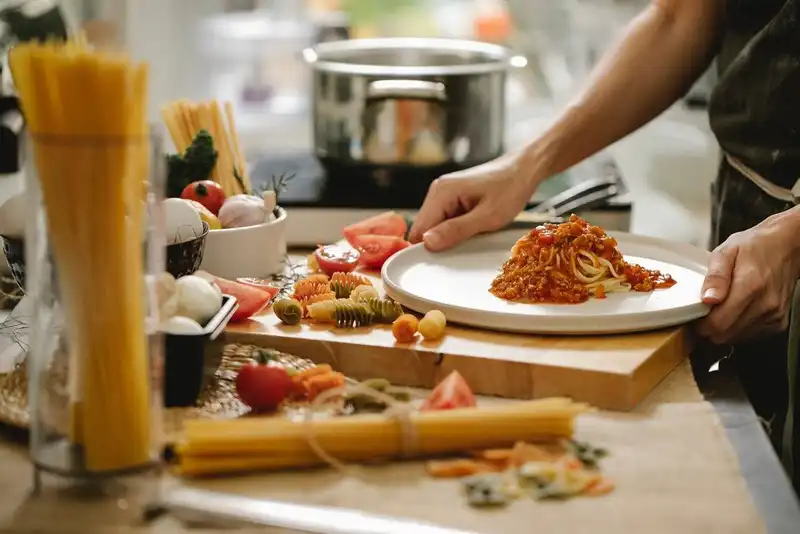
Food preparation refers to the steps taken to guarantee that the food we eat is safe to eat or to enhance the flavor of the food we eat. To ensure that the food prepared by a growing restaurant is safe to eat, we are restricting our definition of food preparation.
Cleaning of preparation equipment, separation of ingredients, ensuring that meals are cooked to the proper temperature, and proper storage of prepared foods are the four categories that may be broken down to ensure that food is safe for eating.
The processes for cleaning food vary depending on the type of food being cooked, but the goal is to eliminate dirt, bacteria, pesticides, and other potentially dangerous elements that could make your customers or employees sick.
Why is food preparation important?
Food spoilage or poisoning can occur if proper precautions are not taken when handling, preparing, cooking, or storing food, and most of the time, the spoiling is not evident to the naked eye. When consumed, this food can harm the body, resulting in foodborne illness and illnesses.
Here are some reasons why food preparation is crucial-
Food preparation is crucial to a company’s success
Implementing a food preparation program is important for several reasons
1. To avoid food poisoning
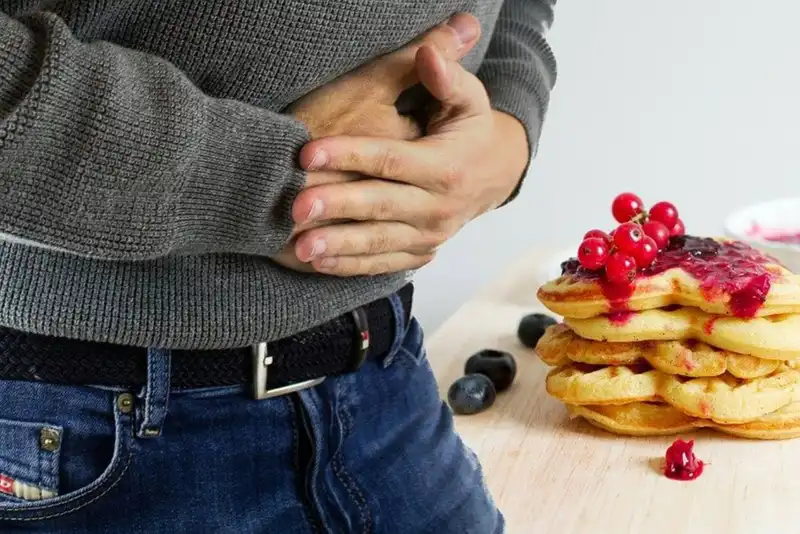
Teaching your staff how to properly prepare meals reduces the risk of food poisoning among your customers. Food poisoning is frequently caused by foods not being stored at the right temperature. Remember that germs that cause food poisoning proliferate most quickly between 40 and 140 degrees Fahrenheit. Food poisoning can be caused by food that has not been properly stored or cooked to a suitable temperature.
2. To avoid food allergies
There's a chance you'll have diners with food sensitivities. One method your institution may help diners choose your restaurant with confidence is by properly separating items during the cooking process. You could save a life or, at the least, minimize a diner's discomfort by training your workers to always use separate cutting boards, knives, bowls, platters, and so on!
3. Better food quality
A greater reputation for your business means better food quality. Moreover, quality foods is a simple way for your restaurant to ensure that its dishes are of higher quality.
It’s not just the food preparation in your kitchen that matters, but also the ingredients you use
We make it easy for you to maintain food safety standards with our range of food safety products
4. Fewer issues with the state
You must undergo specific inspections as a licensed establishment. Certain food preparation practices must be understood and followed by your employees. You'll have fewer troubles with the state and save yourself a lot of trouble if you follow the required practices.
Dos and don'ts of food preparation
Eating out has become an inextricable aspect of everyone's life due to a variety of lifestyle issues. The majority of consumers will go to a restaurant because they trust the food provided, and as a responsible food business owner, it is critical that the food served to customers is correctly cooked. To avoid food-borne illnesses, food industry owners and operators must follow optimal food production and hygiene procedures. From the moment of procurement through the point of serving the consumer, spoiling might occur at any time.
Here are some dos and don'ts of food preparation-
1. Procurement
The numerous ingredients are handled by many personnel throughout food procurement, from sellers selling raw food items to those who cook the dish in the commercial kitchen. This exposes the raw material to a wide range of bacteria, which can cause allergies and stomach problems in those who consume it. This is why it's crucial to inspect the meals you've gotten. The receiving department should not accept them if they are determined to be rotten or spoilt and discolored. The common signs of food spoilage are vegetables that aren't firm, different color hues of cheese, meat products with strong scents, and off-flavors.
2. Washing foods and hand
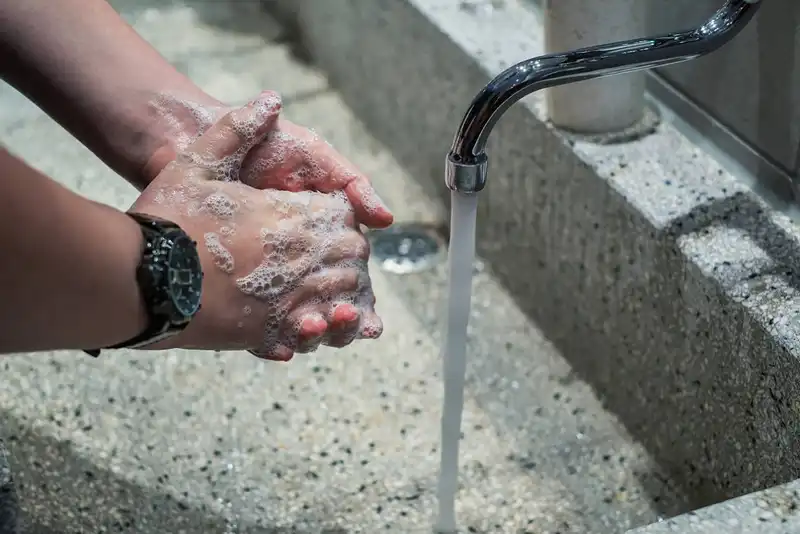
Hand washing and drying are an important part of the food preparation process to eliminate bacteria and viruses that are harmful to one's health. It's also crucial to wash your hands after handling raw materials. Kitchen surfaces, chopping boards, knives, and any other culinary equipment or clothing that may come into direct or indirect contact with the meal are also clean. Personal hygiene and kitchen hygiene are critical for proper food preparation.
To remove dust, bacteria, pesticide residue, and chemicals, make sure food goods are thoroughly cleaned and rinsed. Wash and store poultry products separately to prevent cross-contamination. Viruses and poisons can contaminate meats, seafood, and dairy products, as well as all fruits and vegetables, causing food-borne allergies.
Always store fresh vegetables separately from farm products or seafood, as a general rule. To avoid cross-contamination, keep utensils and other cooking equipment separate.
3. Cooking temperatures and storage
To avoid cross-contamination, keep meat items, dairy goods, shellfish, and vegetables in separate storage compartments. The temperature in cold storage and deep freezers, as well as walk-in chillers, should be just right. Cooking should be done at the appropriate temperatures, with hot food served hot and cold food served cold.
When keeping food, it's also important to keep in mind the storage temperatures. Food goods should be labeled with the receipt date and kept in temperature-controlled conditions. The required personnel must be well-versed in all aspects of the job. This will stop hazardous bacteria from growing and spreading, causing food poisoning. When food is not maintained at the proper temperature, bacteria multiply and spread, resulting in stomach infections and food poisoning. To reduce the chances of food poisoning and allergies, Food must be prepared and stored at the appropriate temperatures.
4. Avoid cross-contamination
When bacteria or germs migrate from one food to another, this is known as cross-contamination. Cross-contamination happens when raw foods are not adequately separated. Separate chopping boards, slicers, knives, and cooking tools should be used for different food kinds to avoid cross-contamination. Cooked or ready-to-eat food should never be mixed with raw or undercooked food. Also, immediately after removing the meat or fish products, all packaging materials should be discarded. Reusing packaging material is not recommended because it might lead to cross-contamination and food degradation.
5. Avoid food-borne illness
Cross-contamination and food-borne infections can occur if food is not properly prepared. To avoid biological hazards in food, the chef and assisting team members must use sterilized utensils or those that have been washed using the proper cleaning solutions. In kitchen facilities, sanitizing utensils with hot water or a chlorine-based solution should be a regular practice. To avoid food contamination, a proper cleaning regimen should be followed to keep crawling and flying insects at bay.
How to organize your food preparation station?
One of the greatest ways for your preparation worker or restaurant employees to ensure that the best
food safety plan is followed is to have a well-organized food preparation station. It also improves the efficiency of culinary activities. Make sure the prep stations are built for speed. A cutting board should be present at every food preparation station. Knives, as well as a nearby sink, should be available for quick cleanup and disinfection.
Additionally, each food prep station should include a large scrap bin where scraps from the cutting board can be scraped into. It is also necessary to have a garbage container at each station.
It's also a good idea to put up several sorts of food preparation stations as a food safety zone. A chicken station, for example, should include a plastic cutting board, a metal sheet to catch any drippings from the fowl, plastic gloves, paper towels, and a scrap bin.
A space for washing fruit, a cutting board, a scrap bin, knives, vegetable peelers, and an easily accessible area for cleaning produce should all be available. To avoid cross-contamination, keep the produce section and the raw meat processing area separate.
Who is a food preparation worker?
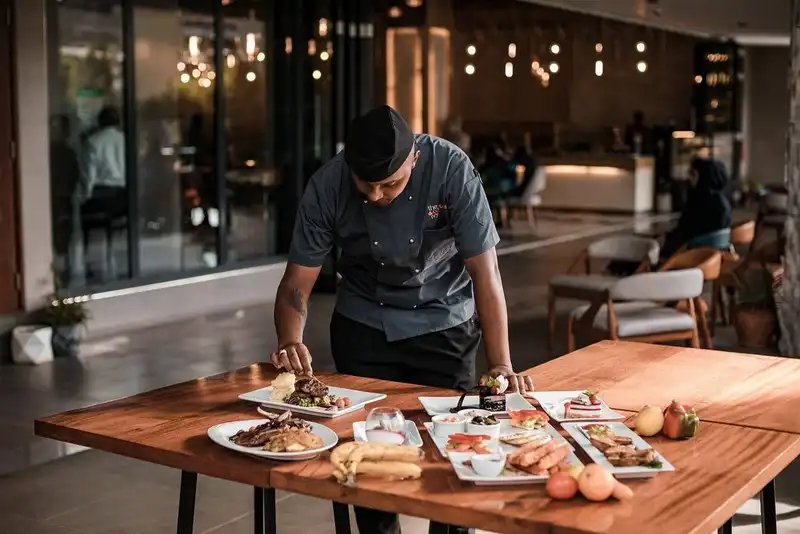
Under the supervision of culinary chefs, cooks, or food supervisors, food preparation personnel conduct a variety of basic activities.
They slice meat, peel and cut vegetables, brew coffee or tea, and ensure that everything is ready for the culinary crew.
What does a food preparation worker do?
Under the supervision of chefs, cooks, or food supervisors, food preparation personnel undertake routine, repetitive duties. They prepare ingredients for complex recipes by slicing and chopping vegetables and creating salads and cold things to assist cooks and other kitchen employees.
Commercial kitchen equipment such as commercial dishwashers, blenders, slicers, grinders, and ovens are used by food preparation professionals in some kitchens.
Although the majority of food preparation workers assist in the preparation of meals, some are also in charge of retrieving cooking utensils, pots, and pans, as well as cleaning and storing other kitchen equipment. Other common responsibilities include stocking and cleaning salad bars and buffet tables.
Those who work in hotels or full-service restaurants frequently prepare beverages for guests using soda machines, coffee makers, and espresso and cappuccino machines. Food preparation employees in fast food restaurants may accept client orders and handle payments using cash registers.
Food preparation and safety
It is necessary to accurately prepare food because one mistake in the food safety process can lead to a slew of issues. Here are some general guidelines for food preparation and safety-
1. Clean
Before and after touching food, as well as after using the restroom, changing diapers, and handling pets, wash hands for at least 20 seconds with warm water and soap. Wash your cutting boards, dishes, utensils, and counters with hot soapy water after preparing each food item.
Consider using paper towels to wipe your kitchen surfaces. Cloth towels should be washed frequently on the hot cycle. Fresh fruits and vegetables should be rinsed under running tap water, including peels and rinds. Scrub them clean with a clean produce brush. Before opening canned goods, make sure the lids are clean.
2. Separate
Separate raw meat, poultry, seafood, and eggs from other foods in your supermarket cart, grocery bags, and refrigerator. One cutting board should be used to slice fresh fruit, while another should be used to chop raw meat, poultry, and shellfish.
Cooked food should never be served on a plate that previously held raw meat, poultry, seafood, or eggs without being thoroughly cleaned in hot, soapy water. Bring marinades to a boil first if you've ever used them on raw foods.
3. Right temperature
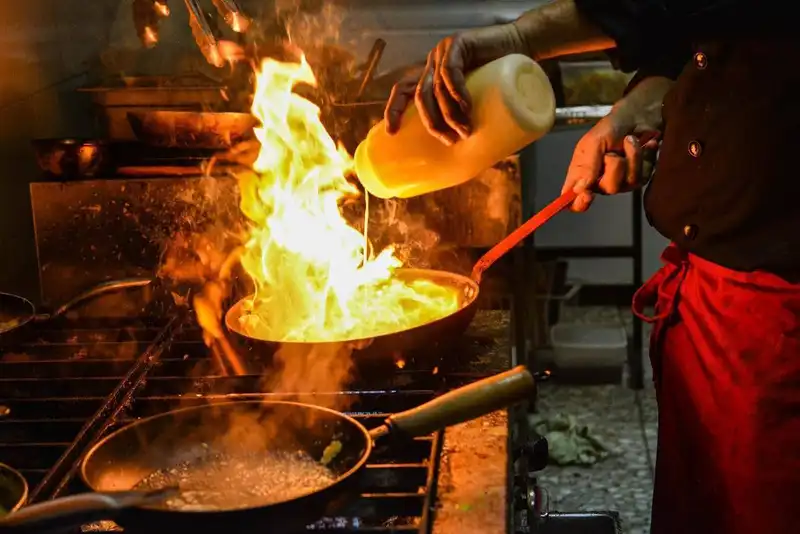
Color and texture are unreliable predictors of safety. A food thermometer is the only way to assure the safety of meat, poultry, seafood, and egg products cooked in any method. These foods must be cooked to a safe minimum internal temperature to kill any harmful microorganisms. Cook until the egg yolks and whites are firm. Only use eggs that have been properly cooked or are warm.
To guarantee even cooking in a microwave oven, cover, stir and rotate the food. If you don't have a turntable, you can manually rotate the dish once or twice while it's cooking. Allow time for the cooking to finish before using a food thermometer to check the inside temperature. Bring sauces, soups, and gravies to room temperature before reheating.
4. Refrigerate
Using an appliance thermometer, ensure that the temperature in the refrigerator is consistently 40 degrees Fahrenheit or below and that the temperature in the freezer is 0 degrees Fahrenheit or lower.
Within 2 hours of cooking or purchasing meat, poultry, eggs, seafood, and other perishables refrigerate or freeze them. Refrigerate within 1 hour if the temperature outdoors is above 90 degrees Fahrenheit.
Food should never be left to thaw at room temperature or on the counter. Food can be defrosted in three ways- in the fridge, in cold water, or the microwave. Prepare food that has been thawed in cold water or the microwave as soon as feasible. Food should be marinated in the refrigerator at all times.
Automate your kitchen's food preparation & safety with Zip Checklist
It's tough to keep track of all the chores you've completed in the kitchen, especially when it comes to food safety in a large restaurant kitchen. Zipchecklist will be your dependable companion in this situation.
By creating standard operating procedure checklists and updating sop templates, Zipchecklist Features can help you maintain a standard operating procedure in your kitchen and keep you and your employees up to date.
It also makes teamwork management easier, allowing you to view your task lists from any device and do business responsibilities. It also organizes daily, weekly, and monthly task lists by keeping track of shared task lists and adjusting them based on employee productivity data. This would eliminate the possibility of your restaurant's food safety protocol being overlooked.
Your phone's task management software keeps track of your to-do lists on a daily, weekly, and monthly basis and ensures that standard operating procedures are followed. This is how task manager notifications are sent. While on the road, it also maintains track of task assignments.
For further information or a free demo, please contact the Zip Checklist team.
Food preparation is not a topic that can be taken lightly
Better food quality means a better reputation for your restaurant
